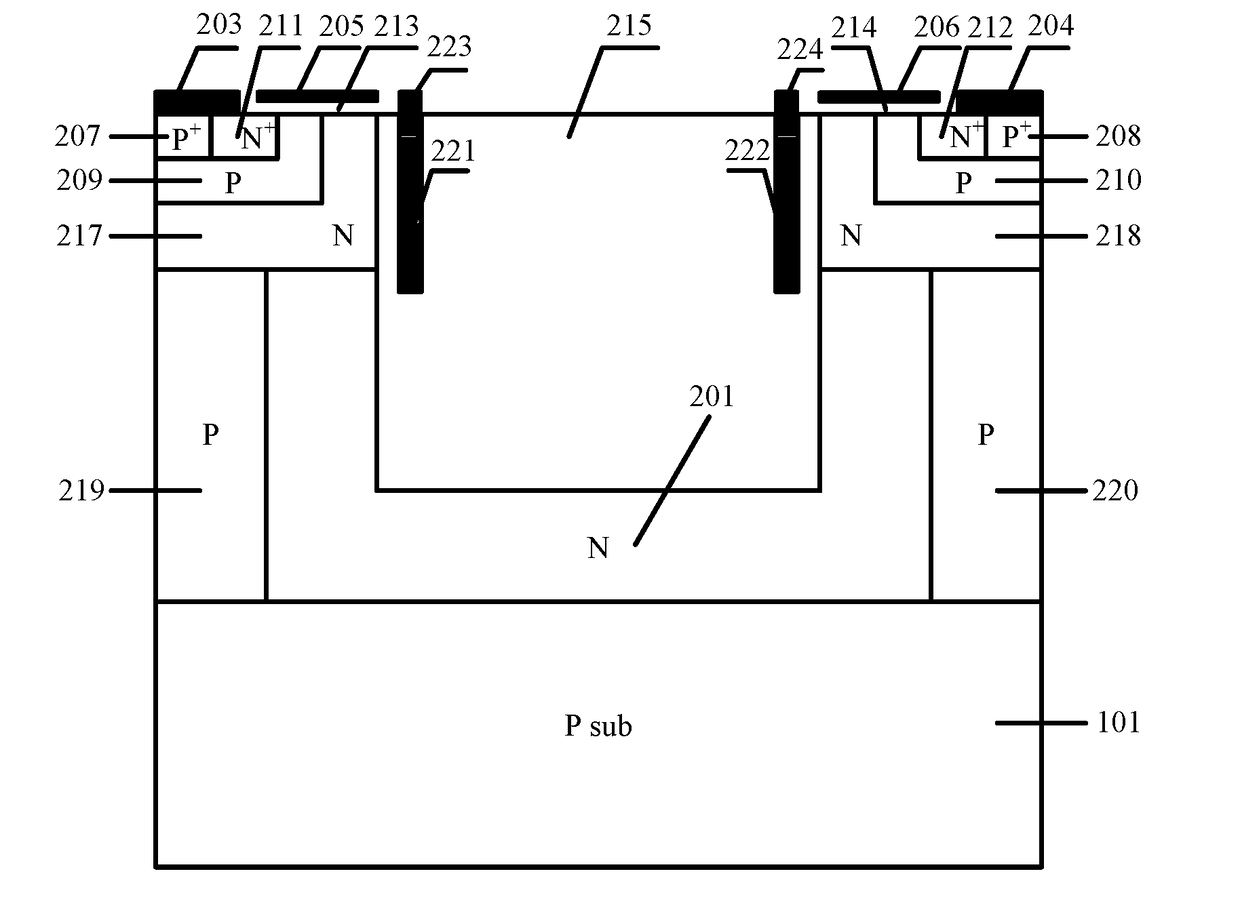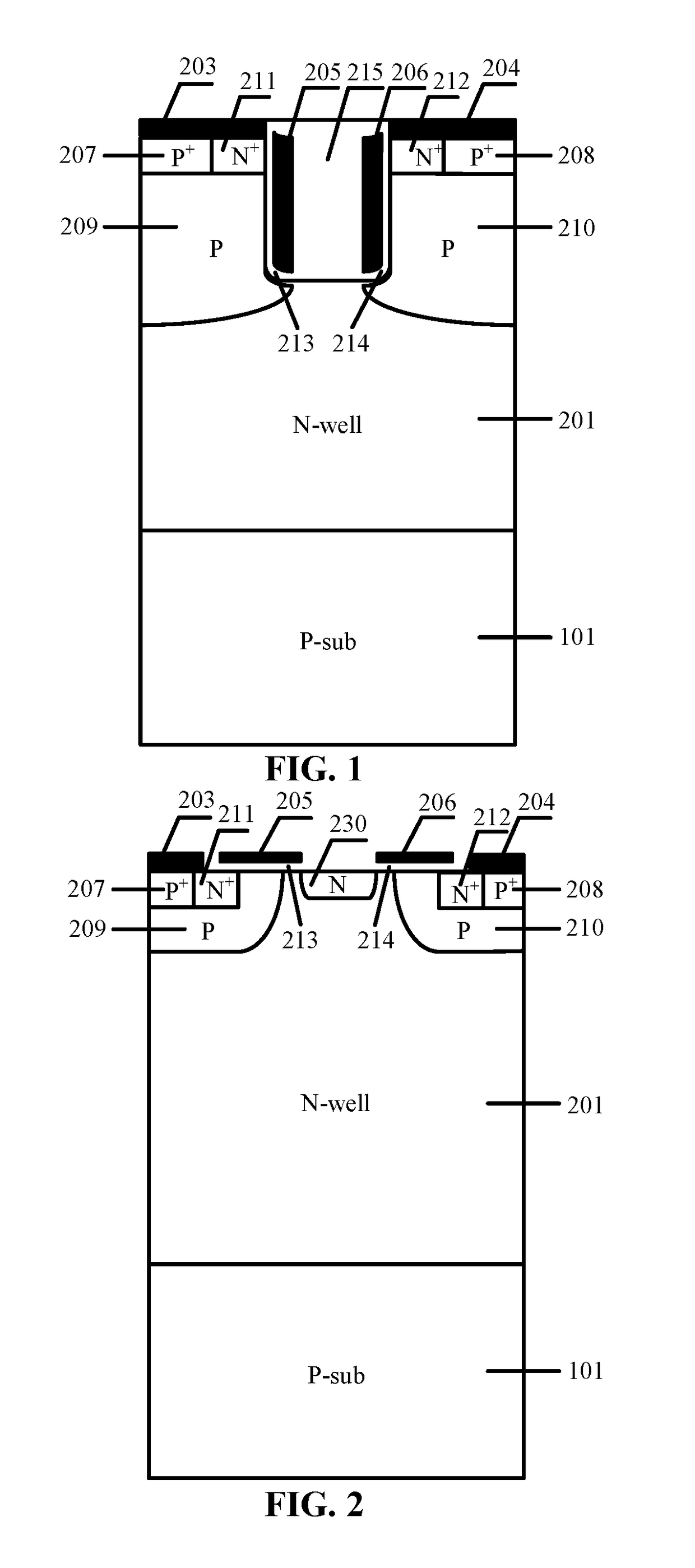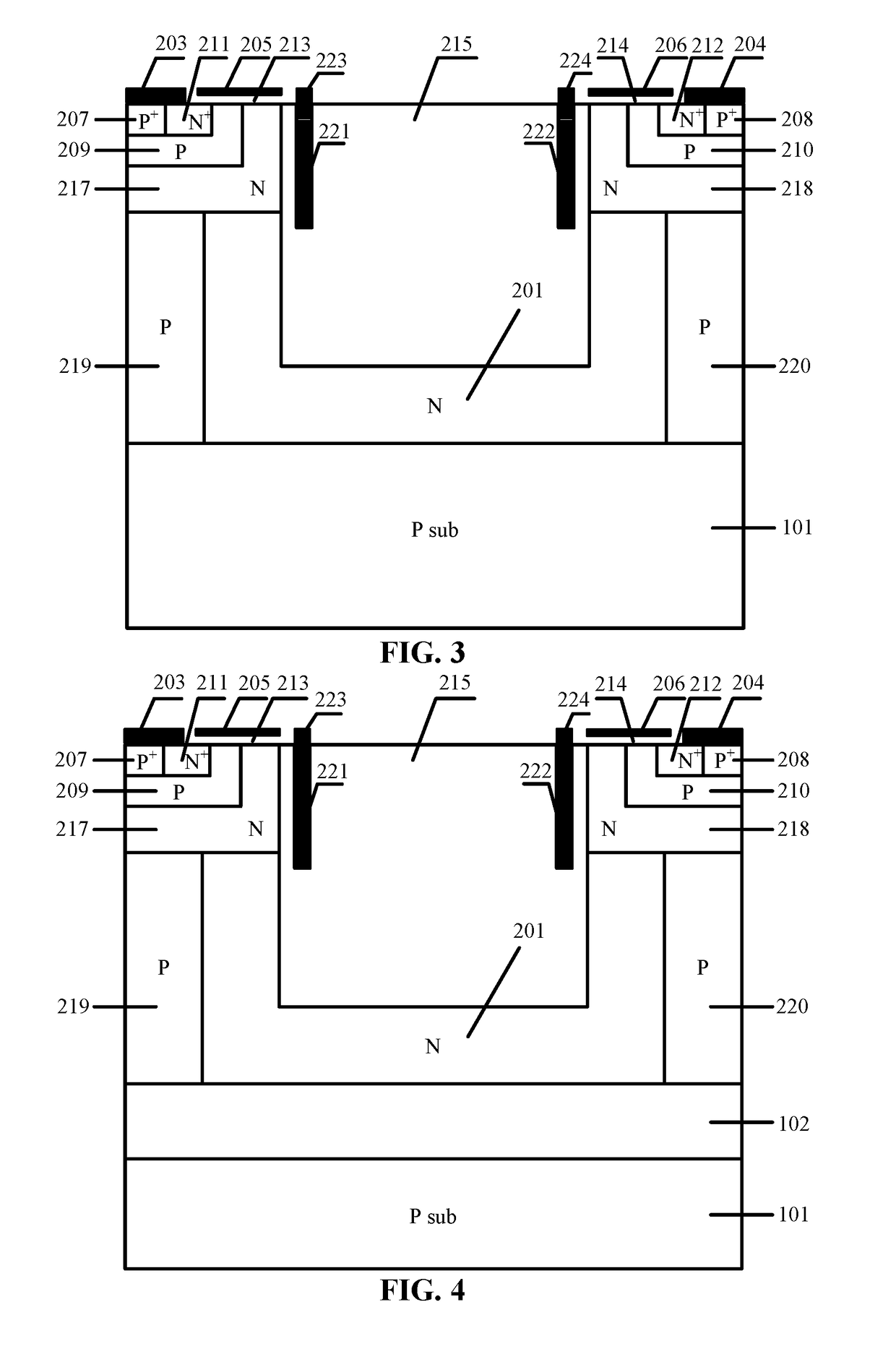Bidirectional mos device and method for preparing the same
a metaloxidesemiconductor and bidirectional technology, applied in the direction of semiconductor devices, transistors, electrical devices, etc., can solve the problems of transverse or longitudinal breakdown, reduce the performance of mos devices, conventional bidirectional mos devices have a large size and large drift region resistance, etc., to reduce the drift region resistance, high breakdown voltage, low voltage
- Summary
- Abstract
- Description
- Claims
- Application Information
AI Technical Summary
Benefits of technology
Problems solved by technology
Method used
Image
Examples
example 1
[0059]FIG. 3 is schematic diagram of a cell structure of a bidirectional MOS device. As shown in FIG. 3, the bidirectional MOS device comprises a P-type substrate 101 and an active region. The active region is disposed on an upper surface of the P-type substrate 101. The active region comprises a drift region, a first MOS structure and a second MOS structure. The first MOS structure and the second MOS structure are symmetrically disposed on two ends of an upper layer of the drift region.
[0060]The first MOS structure comprises a first P-type body region 209, a first P+ contact region 207, a first N+ source region 211, a first metal electrode 203, and a first gate structure. The first P+ contact region 207 and the first N+ source region 211 are disposed in the first P-type body region 209. The first metal electrode 203 and the first gate structure are disposed on an upper surface of the first P-type body region 209. The first P+ contact region 207 and the first N+ source region 211 ar...
example 2
[0072]As shown in FIG. 4, the device in the example follows a basic structure in Example 1, except that a dielectric buried layer 102 is disposed between the P-type substrate 101 and the N-type region 201, the first P-type region 219, and the second P-type region 220.
[0073]The device in the example follows a basic working principle in Example 1, except that the dielectric buried layer is adapted to isolate the P-type substrate 101 from the active region, and the leakage current of the P-type substrate is modified; especially at the IGBT work mode, when the device is turned on, the MOS device as the collector having the high potential injects current to the electron holes of the P-type substrate, thus reducing the loss of the device, and isolating the MOS device from other devices.
example 3
[0074]As shown in FIG. 5, the device in the example follows a basic structure in Example 1, except that a third P-type region 225 is disposed between a lower part of the dielectric slot 215 and the N-type region 201.
[0075]The device in the example follows a basic working principle in Example 1, except that the third P-type region 225 is adapted to provide an additional charge depletion effect when the device is blocked, thus the breakdown voltage of the device and the doping concentration of N-type region 201 can be further improved, and the performance of the device is further enhanced.
PUM
 Login to View More
Login to View More Abstract
Description
Claims
Application Information
 Login to View More
Login to View More - R&D
- Intellectual Property
- Life Sciences
- Materials
- Tech Scout
- Unparalleled Data Quality
- Higher Quality Content
- 60% Fewer Hallucinations
Browse by: Latest US Patents, China's latest patents, Technical Efficacy Thesaurus, Application Domain, Technology Topic, Popular Technical Reports.
© 2025 PatSnap. All rights reserved.Legal|Privacy policy|Modern Slavery Act Transparency Statement|Sitemap|About US| Contact US: help@patsnap.com



